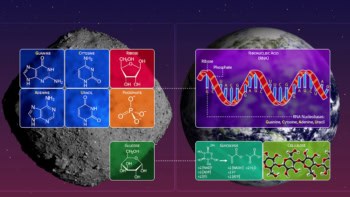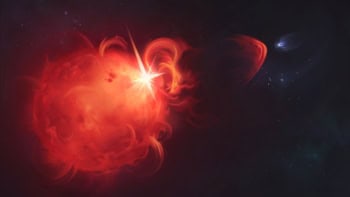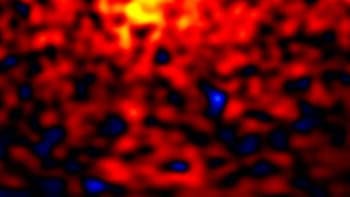Flash Physics is our daily pick of the latest need-to-know developments from the global physics community selected by Physics World‘s team of editors and reporters

Exoplanet with huge rings could be detected by amateur astronomers
An exoplanet 50 times the mass of Jupiter and encircled by a huge system of dust rings may be orbiting a star 1000 light-years from Earth. That is the claim of Hugh Osborn of the University of Warwick in the UK and an international team of astronomers who have seen evidence for the ringed exoplanet in two telescope surveys. The gas-giant exoplanet appears to be orbiting a young star called PDS 110 with a period of about 2.5 years. As the planet crosses in front of the star it blocks some of the starlight from reaching Earth. By a careful analysis of crossings recorded over 15 years by the Wide Angle Search for Planets and the Kilodegree Extremely Little Telescope, Osborn and colleagues have concluded that the exoplanet is surrounded by a ring system that is many times larger than the rings of Saturn. The team is now looking forward to making more detailed observations in September 2017, when the next crossing is expected to occur. Indeed, the dimming effect is so large that it should be measureable by amateur astronomers. “September’s eclipse will let us study the intricate structure around PDS 110 in detail for the first time, and hopefully prove that what we are seeing is a giant exoplanet and its moons in the process of formation,” says Osborn. While this is not the first exoplanet with rings, if its existence is confirmed in September it will be the first ringed exoplanet with a known orbital period. The exoplanet appears to lie within the habitable zone of PDS 110, which means that if moons form from the rings, they could support life. The latest analysis of the exoplanet is described in a preprint on arXiv.
International Day of Light will debut in 2018
Following the success of the International Year of Light (IYL) in 2015, the United Nations Educational, Scientific and Cultural Organization (UNESCO) has given its support to an annual International Day of Light. Beginning next year on 16 May, the day aims to provide “an annual focal point for the appreciation of the role that light plays in the lives of the citizens of the world”. An official inauguration ceremony will take place at UNESCO’s headquarters in Paris on 16 May 2018 involving presentations from Nobel laureates, business leaders and those representing other organisations in the arts, architecture, lighting and design. During IYL 2015, thousands of events were held in over 100 countries celebrating the science and applications of light. The year involved more than 100 partners from 85 countries – including the Institute of Physics, which publishes Physics World.
LIGO pioneer bags €750,000 Körber prize

Karsten Danzmann, who led the development of key laser technologies used in the LIGO gravitational wave detectors, has won the Körber European Science Prize 2017. Worth €750,000, the prize will be presented to Danzmann on 7 September in Hamburg, Germany. The German physicist is 62 and is based at the University of Hannover. He is also director of the Max Planck Institute for Quantum Optics in Hannover. Danzmann pioneered the use of “squeezed light” to achieve significant noise reduction in the LIGO interferometers. The LIGO team – which includes Danzmann’s research group – has detected three gravitational-wave signals from coalescing binary black holes since September 2015. The most recent discovery was announced just yesterday. The prize is given by the Körber Foundation, which was founded in 1981 for the advancement of culture and science by the German entrepreneur Kurt Körber.



